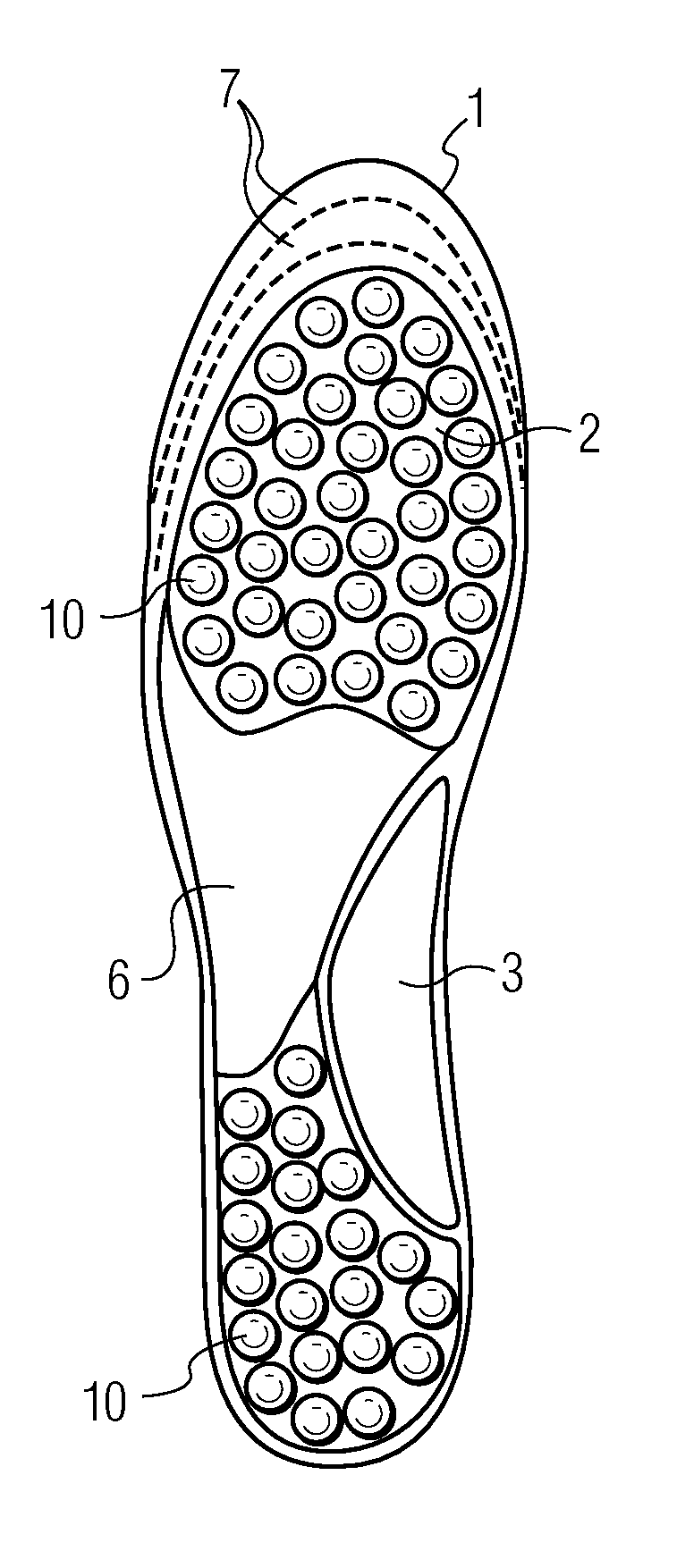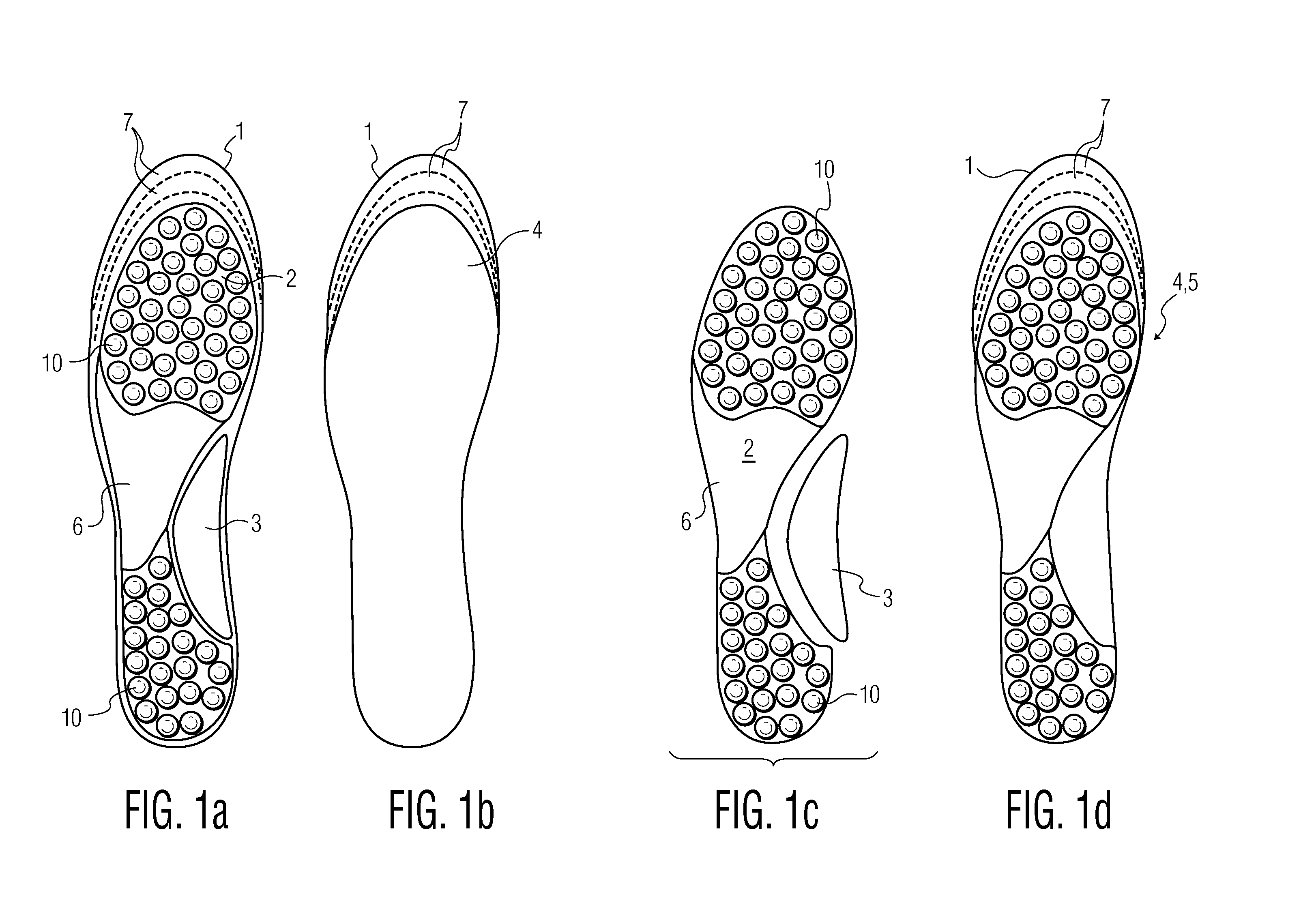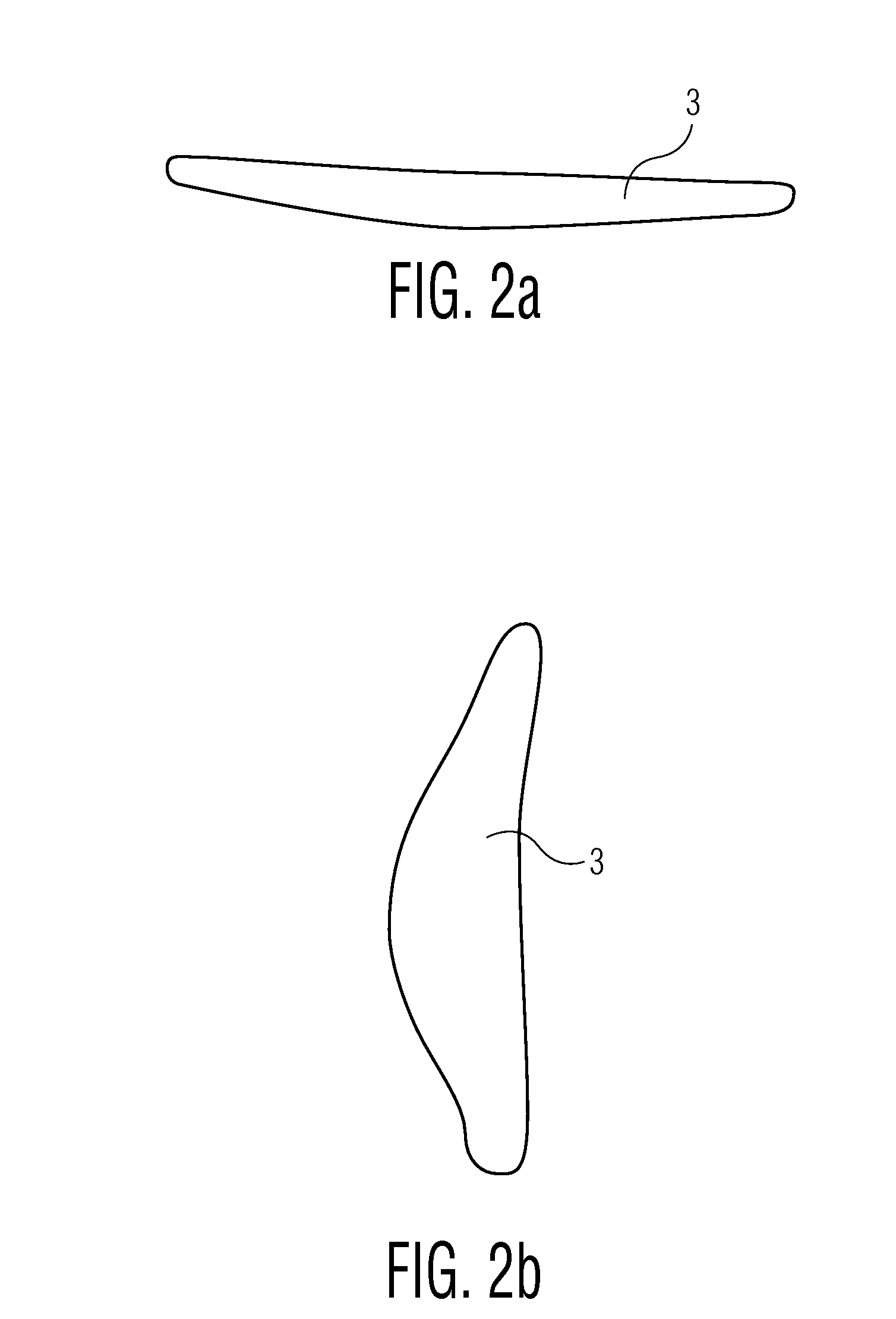Shoe insert for heating and cooling foot
- Summary
- Abstract
- Description
- Claims
- Application Information
AI Technical Summary
Benefits of technology
Problems solved by technology
Method used
Image
Examples
Embodiment Construction
[0019] This invention, in its preferred embodiment, comprises two layers of a thin, durable material such as vinyl heat sealed along the perimeter of the material roughly in a shape matching the outline of the average foot, though those skilled in the art would also perceive of the benefit of producing a roughly oval shape. The lower layer is of greater thickness than that of the top layer, such that indentions of approximately ⅛ inch may be placed in the lower level without weakening the integrity of the pouch. Between the upper and lower levels reside spherical granules of Ammonium Nitrate evenly distributed throughout most of the volume and a cellophane pouch filled with an appropriate volume of water so as to completely saturate the Ammonium Nitrate granules once the pouch is ruptured.
[0020] Those skilled in the art may be able to perceive of additional embodiments such as different endothermic chemical reactions or altering the size of the indentations within the bottom layer ...
PUM
 Login to View More
Login to View More Abstract
Description
Claims
Application Information
 Login to View More
Login to View More - Generate Ideas
- Intellectual Property
- Life Sciences
- Materials
- Tech Scout
- Unparalleled Data Quality
- Higher Quality Content
- 60% Fewer Hallucinations
Browse by: Latest US Patents, China's latest patents, Technical Efficacy Thesaurus, Application Domain, Technology Topic, Popular Technical Reports.
© 2025 PatSnap. All rights reserved.Legal|Privacy policy|Modern Slavery Act Transparency Statement|Sitemap|About US| Contact US: help@patsnap.com



